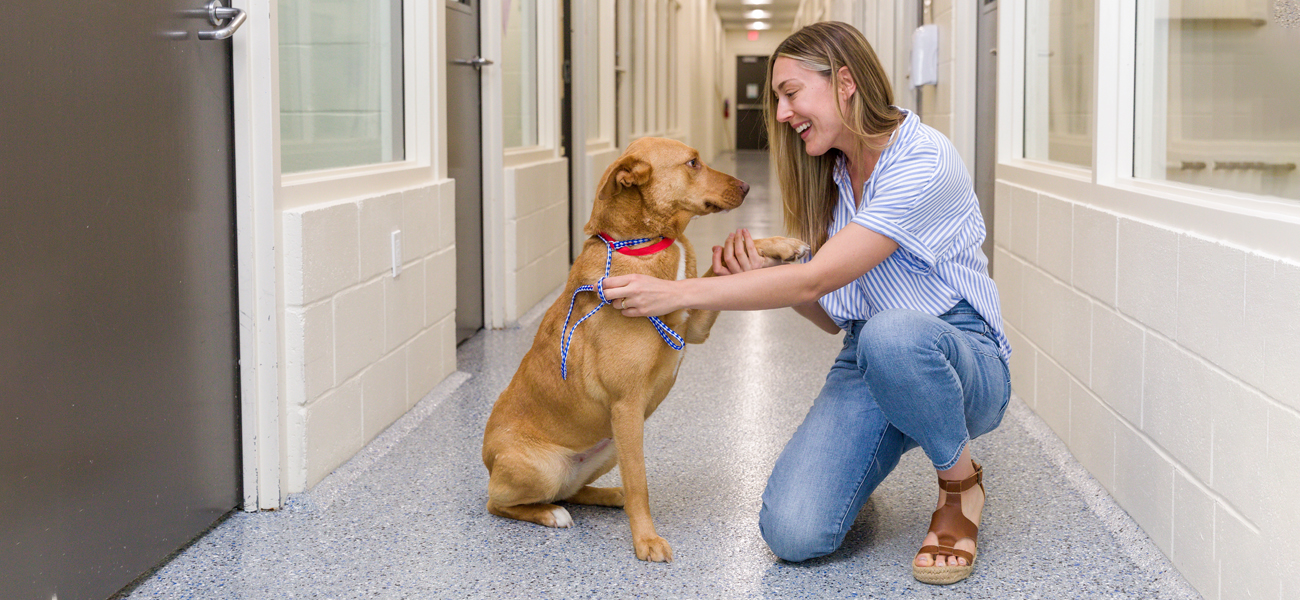
Pandemic pets: An increase in fostering is keeping more Baton Rouge pets alive
Carrie Kahn was one of dozens of volunteers who lined up outside Companion Animal Alliance late last March to help the agency find foster homes for its sheltered animals.
Gov. John Bel Edwards had just issued Louisiana’s COVID-19 stay-at-home order, and CAA, Baton Rouge’s nonprofit animal shelter, issued emergency pleas to volunteers to foster a dog or cat. The facility was going to be closed to the public for adoptions during the shutdown, while also having to continue to take in stray dogs.
“I think I waited four hours outside, since they were limiting the number of visitors inside at the time,” Kahn recalls. “So many people showed up to foster that day. It was truly incredible to see the community step up.”
|
|
One by one, prospective fosters entered the building to pick out an animal they felt would fit well into their lives. Some were already trained to foster pets, and newcomers had trained online before arriving, or received an orientation on the spot. By the end of the day, CAA had found successful matches for about 130 of the 200 mostly dogs at the shelter. Those remaining weren’t adoptable anyway—they had been picked up by Animal Control, but had owners.
The all-call was a huge accomplishment, and one that’s had a lasting impact on the shelter’s operations more than a year later, says CAA Philanthropy Director Emily Jackson.
“Our save rate at the end of 2019 was 76%,” Jackson says. “By the end of the first quarter of this year, it was 92%, which we credit to fostering.”
CAA was established in 2010 to improve Baton Rouge’s animal save rate, which was just 20% at the time. The organization has achieved this remarkable increase through robust adoption and foster programs, community partnerships, a humane and state-of-the-art facility on Gourrier Drive and a partnership with the LSU School of Veterinary Medicine.

While pet adoptions are essential in increasing a community’s save rate, fostering is an equally powerful strategy because it provides an immediate multiplier effect, Jackson says. Foster families care for adoptable pets and actively help find permanent homes, freeing up CAA to care for animals who need extra resources.
“It’s unreal what it’s done for our team to be able to focus on animals with problems,” Jackson says. “We were having the luxury of saying ‘We have the time to save a life, or two or 100.’ The foster program relieves the burden of not having enough space. It significantly increases our capacity of care.”
With the pandemic keeping workers at home much of last year, many residents felt more comfortable taking on a foster pet.
“I was volunteering (at the shelter) and walking the dogs, but wanted to do more when the pandemic hit,” Kahn says. “I found out I would be working from home and decided to go for it.”
Kahn picked up her first foster dog on the day before the shutdown, and a total of six dogs since. All but her current dog have been adopted, but it will remain with her until his forever family comes along, she says.
Going back to work hasn’t been an issue, Kahn adds. Her foster dogs have handled it fine. 
While fostering is at an all-time high, Jackson believes it will continue to grow. CAA has a current network of about 400 foster volunteers. Those who are regulars support each other by providing occasional pet-sitting if someone needs to travel, or sharing of pet equipment, Jackson says.
There are three different ways to foster, according to Jackson. Long-term fosters, who are especially important, accept an animal of their choice until a permanent family comes along. Long-term fosters are asked to help promote the animal on social media and bring it to community adoptions held by CAA partners. Long-term fosters have to be flexible, because it’s hard to say when a willing adopter will come along.
Another option is transport fostering, a two-week commitment in which an animal stays in a home until it’s moved to another shelter (usually in the northern U.S.) with a smaller population of animals. This, of course, increases its chances of being adopted.
The third option is weekend fostering, which gives animals a brief respite from shelter life.
“It’s a great opportunity for individuals or families to try it out for a couple of nights to see if they want to invest more time,” Jackson says.
“We have an amazing network of fosters,” she adds. “They’re not only there for the dogs, but also for each other.”
For more information about how you can help, visit caabr.org.
This article was originally published in the June 2021 issue of 225 magazine.
|
|
|
